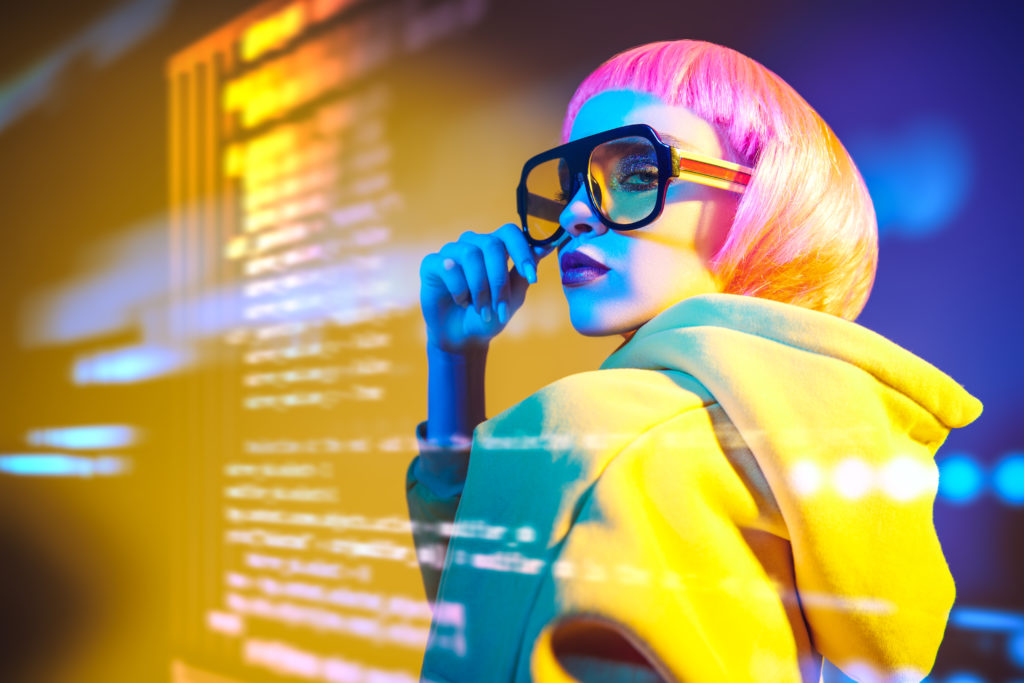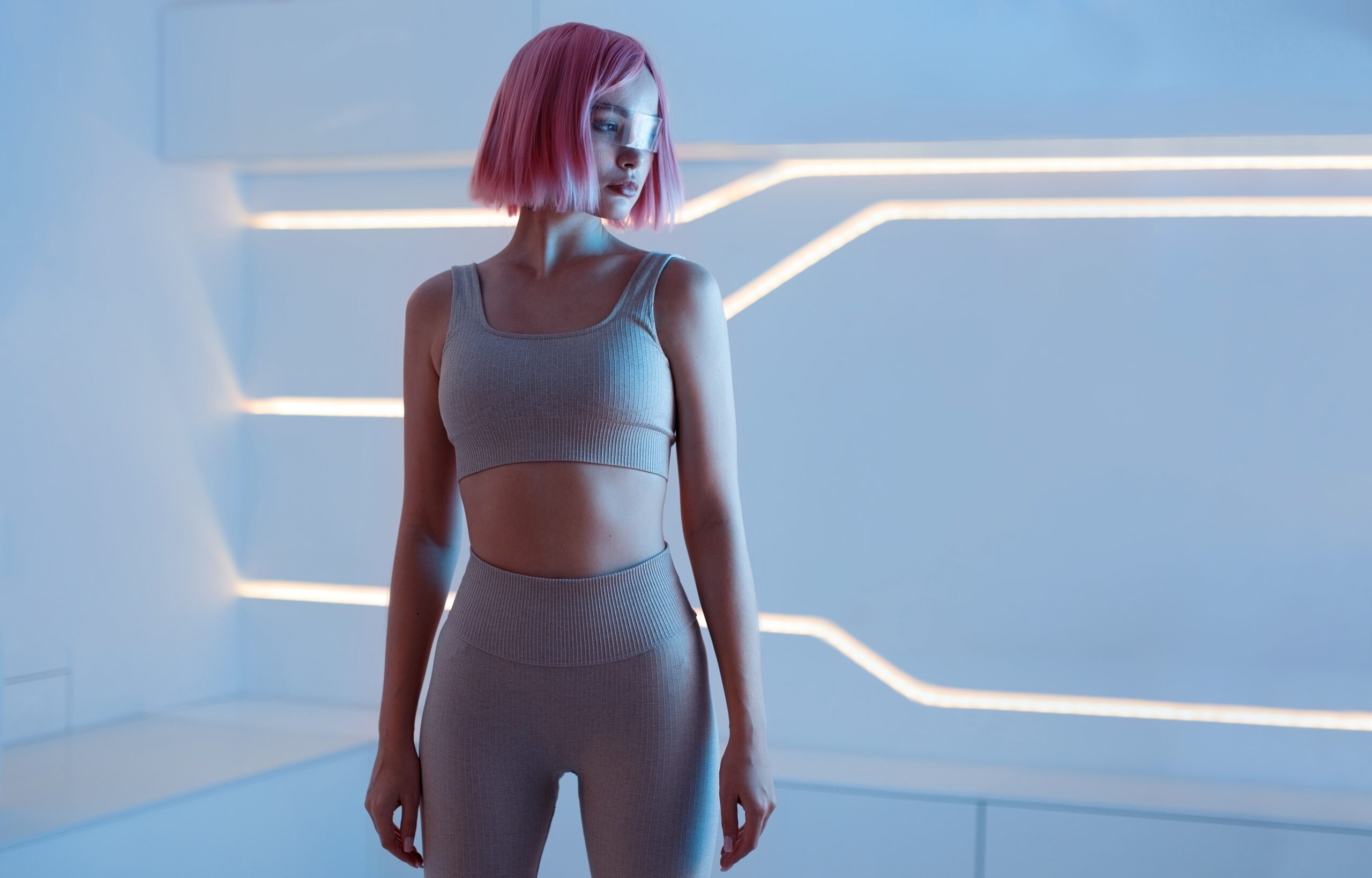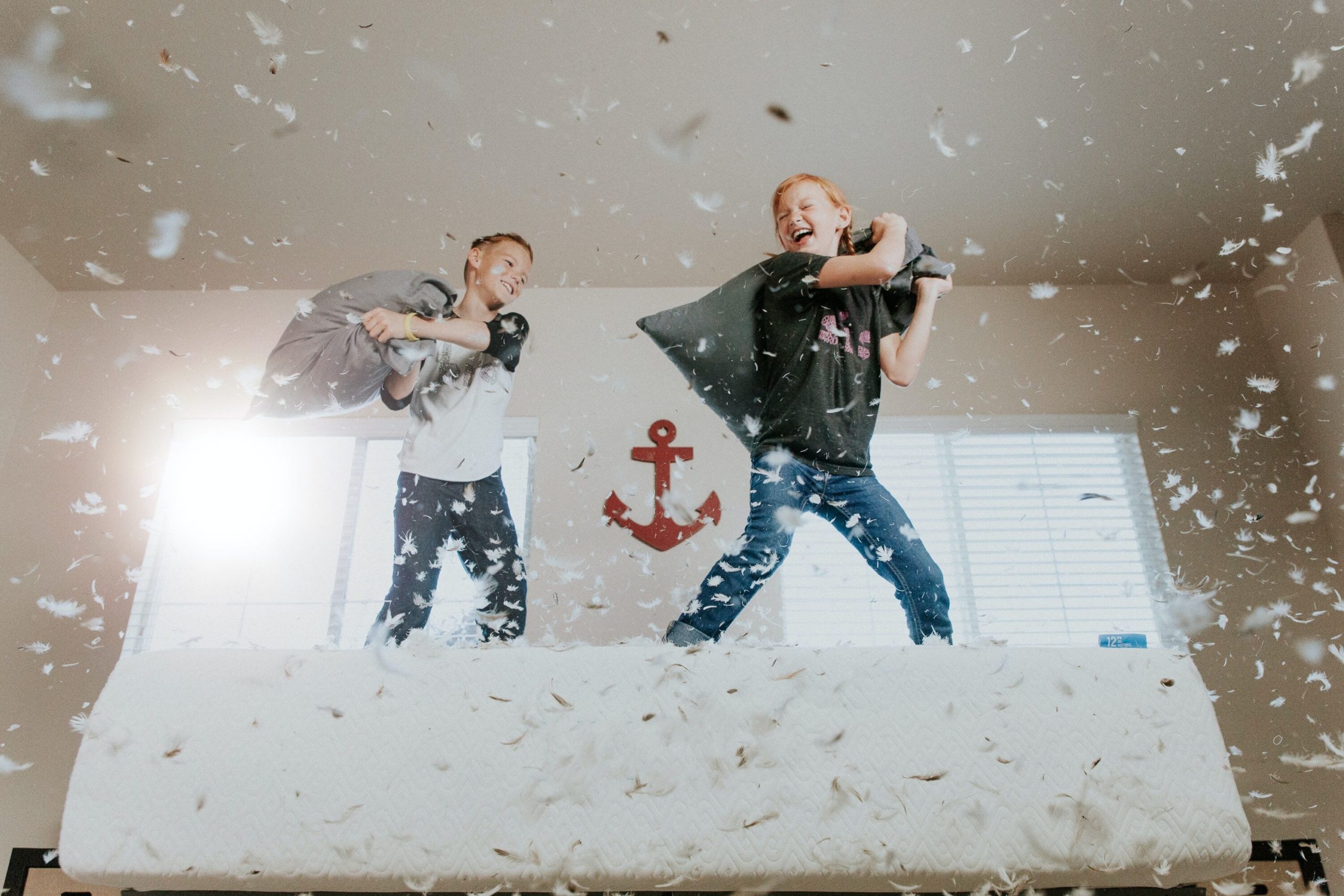When we talk about the digitisation of the fashion industry what do we mean? The reality is that digital technology has revolutionised fashion companies and continues to impact it in so many ways. From the computerised machinery that cuts fabric to the programmable machines that add embellishments and embroidery, digital technology has become pivotal to the manufacture of apparel, but where else has computer technology impacted the industry?
We decide to cast a wide net and look at the broader fashion industry. Considering the design, supply chain, production, marketing, styling, waste management, consumption and consumer feedback how has digitisation impacted the whole fashion community?
Virtual Toile Digital Tools
Starting with the design process it’s worth first considering that there is never going to be much demand for a solution that doesn’t resolve a problem. In the case of fashion design, the standard approach of paper-based drawings making their way to three-dimensional prototypes is often called the ‘toile process’ and has worked fine for decades.
These prototypes are either made from basic linen or cheaper canvas cloths and give the design team an idea of how their design is progressing. Designers and makers will be looking for how the pattern pieces join together and how the garment sits on the body. The process might be repeated with slight changes 20 or 30 times until the team is ready to create the design in more expensive materials.
The downside of this approach is the initial material waste, the time taken to make each toile and the textural disconnect between a linen toile and a silk dress. Often, when the new pattern and design are recreated in silk or cotton, the designers find new issues and have to return to the toile process to address issues.
While this process has worked fine for years, the increasing time constraints designers face, and the need to be more sustainable are forcing fashion brands to look for alternatives. Digital technology and the increasing speed of computer processing power allow for CAD (computer-aided design) drawings to turn into a virtual toile in seconds. Designers can cycle through different materials and zoom in and out of every seam, hem and buttonhole to see how their design suits different materials. 3D modelling software is now so advanced that a fashion brand can use the images generated by the software to represent the finished articles on their e-commerce site.
Romans CAD is leading the way for shoe design and modelling, While MarvelousDesigner and Browzwear are perfect for realistic renders and complex textures.
The reason for the rapid uptake of these digital design solutions is the fashion industry’s constant need to design and manufacture faster whilst also being mindful of material waste. The traditional method of drawing and making toilers may be romantic but is no longer financially or economically sustainable.
Digital Runways
Ok, this is a big one. As an antidote to the ever larger in-person catwalks by the likes of Balmain, many designers are ditching the live show entirely. At either end of the fashion spectrum, things are becoming more extreme. Some designers are opting for more lavish, excessive and expensive displays while others at the opposite end of the spectrum are simply releasing static images of their new collections after an informal studio walk-through.
The two approaches reflect two aesthetics of the fashion industry; high polish, wow factor and spectacle vs the too cool, relaxed, nonchalant vibe. Both tap into the values and priorities of their consumers. In cinema terms you might say, one half is the big budget Hollywood blockbuster crowd who goes to the IMAX to watch Marvel films. The other half are the art house lovers who visit independent cinemas to watch low-budget foreign language films.
But the reality is that most consumers might like the approach taken by their favourite fashion house, but will rarely find themselves at a catwalk show of any scale. For the majority of the public, we consume fashion news and fashion shows through our phones, TVs or computer screens.
A third approach is being adopted by some emerging designers that can serve the same needs as those of us watching from home without bankrupting them.
It might sound strange but some start-up fashion brands are debuting their designs in a purely digital space with no physical pieces. And the results are often indistinguishable from reality on the TV, computer or mobile phone screen.
Either to build a portfolio, illicit interest in their design style or simply develop their vision, younger designers are creating full virtual collections and debuting them on a digital catwalk. Using a 3D design tool such as Marvellous Designer they create silhouettes and patterns before using rich textile textures using Substance Painter. Lastly, using Motion Capture for the natural movement of their avatar models, and Unreal Engine for the environment, designers can pull together impossible, dreamlike catwalks that reflect their wildest fantasies.
The entire vision of a designer can be presented without a single needle being threaded. So really, what is the key benefit of this? Well, fashion schools will argue that designers should be concerned with creating a vision for their brand while also managing their budgets. Virtual runway shows offer a safe ‘sand-pit’ space for them to develop their unique design language without expending vast sums of money. They offer
Alexander McQueen’s nephew, the leading digital artist Gary James McQueen, is leading the charge for more virtual catwalks. In practical terms these creations can then go on to be sold on virtual clothing platforms such as Dress X or designers can work on a made-to-order system where the virtual collection only goes into production if a buyer is prepared to place an order.
Virtual Influencers and fashion brands
In much the same vein as virtual catwalks, the fashion industry now enjoys virtual influencers. Besides the quaint novelty, these digital personalities can pack some serious marketing potential for fashion brands looking for a spotlight.
Often figureheads for a company of 3D graphic designers and marketing professionals, a virtual avatar influencer can be inserted into Paris Fashion Week and model looks in Time Square without ever setting foot on a plane. This makes them a lucrative digital marketing tool for any advertisers, brands and retailers looking to drive traffic to their e-commerce platforms.
However, the excitement and interest in virtual influencers have fallen away as more people become aware of the reality. When we get a peek at the man behind the curtain, it’s harder to enjoy the spectacle before us. An influencer’s power is built on authenticity and fallibility, with some of the world’s biggest influencers sharing real human drama and trauma in concert with the polished influencer lifestyle. A virtual influencer living a virtual life can allude to authenticity and scriptwriters can devise drama but followers on Instagram are unlikely to be impressed. The real case of Lil Miquela virtual influencer demonstrated this best when the character presented as a social justice activist. This was felt to be problematic given she was a marketing tool.
What role is there for virtual influencers as we move into this next phase of digitally augmented fashion reality? Big brands are likely to take advantage of digital characters in video games, and CGI films to launch products or campaigns. Lara Croft could model Converse or Avatar’s Neytiri, voiced by Zoe Saldana, could promote environmental sustainability in keeping with the message of the James Cameron films.
In an increasingly digitised fashion landscape, virtual influencers will have a role to play. But given consumers’ need for authenticity, creators have to be careful not to make people feel uneasy or shortchanged.
Virtual Clothing
Away from virtual catwalks and virtual influencers, we have to return to the primary subject of the fashion industry, which is obviously apparel. For thousands of years starting with furs, before humans developed weaving technologies, humans had to cover their bodies to protect them from the elements. Leather offered protection from the harsh rain and snow of the Northernmost Americas, woven hemp provided warmth in the European winter months and fine silks offered cool comfort in the southeast Asian heat.
Our ability to make functional clothing to help us adapt and thrive in any climate is one of the great skills of humanity. We have even managed to engineer and make clothing that allows humans to survive the harsh inhospitable realities of outer space.
So why is it so surprising that humans might want to make clothing for the digital realm? Yes, there is no vulnerable physical form in the digital realm that needs protection from the elements.
But so much of our modern clothing expresses more than our desire to be safe. The jumper we slip on at the start of autumn signals our desire to be warm, but the colour and the style communicate something of our ideology, our tribe or our personal philosophy. In short, the function of clothing is to keep us safe from the elements, but clothing also allows us to communicate something about our personalities.
Virtual clothing works in the same way. As we spend more time online we have each developed a second self. Explored in academia and philosophy the idea of a second online self having equal status with our physical selves is increasingly plausible. For some people, the virtual self is more aligned with their true self
For most people, the second self is represented in just a handful of selfies on social platforms like Instagram and Facebook, where each of us presents a carefully curated vision of ourselves. What if the fantasy of that virtual self could be dialled up to a ten? Instead of pictures of you wearing a nice dress from H&M, you could be wearing a virtual Oscar de la Renta gown. A single image, even augmented with virtual clothing can convey a lot of information. Yes, the dress is a fantasy, but it shows your love for high fashion and drama. It lets people into your imagination, maybe even letting them know the real you.
Platforms such as Dress X and XR Couture are curating the best digital clothing from new designers and established brands. Currently, in its infancy, the concept of digital clothing hopes that in the future, your Metaverse avatar can wear the designs. But more, it can be shared with other avatars you might use. The clothing might also be shared to your online gaming account and your gaming avatar can wear a version while they fight Zombies in a post-apocalyptic London landscape. Lastly, it can be projected onto your body as augmented reality, much like filters are used today.
If this sounds far-fetched, just consider the present-day ubiquity of augmented backgrounds and beautifying filters used in video conference software. It’s only a short step to augmented clothing.
As technology progresses, and the world shifts to web 3.0 our virtual selves will take on increasing importance and may come to deserve a dedicated wardrobe of their own.
Virtual Fit
All around the world, the pandemic forced high streets to close, with the whole retail sector scrambling to sell their products and services online. Some industries fared better than others.
Healthcare embraced the video call in place of in-person consultations, restaurants pivoted to delivery and fashion doubled down on the free delivery and returns model. With the whole population of entire countries now looking to shop online, those who had previously resisted brought their reservations along with them. Concerns over the material, fit, textures and comfort that are resolved in a real-life dressing room are difficult to resolve online. Major retailers upped the quality of their product descriptions and more brands followed ASOS’ lead and introduced short video clips of their pieces in motion. These steps did little to reassure consumers about the final fit of a garment. Of course, free returns meant consumers didn’t have to be left out of pocket but the reluctance to waste time and, albeit temporarily, waste money remained for some.
Increasingly brands have turned to technology to create some version of the changing room experience. Using similar technology to Snapchat and Instagram filters, shoppers can sometimes find a brand that will ‘project’ the clothing onto an image or live feed selfie. Pioneered by spectacle brands, these selfie-style images are by no means perfect but can offer a shopper some basic sense of whether the colours, shape and style are a suitable match. During the pandemic, this was a welcome and safe alternative to the changing room.
While this imaging technology delivers a better understanding of suitability it doesn’t deliver on fit. For accurate sizing, mobile body scanning technology perfected by companies like Sizer, is a must.
Consumers can use their smartphone camera to get precise measurements just as accurate as a specially trained sales assistant in a high-end store. These precise measurements can then be translated into tailored size recommendations. Stores and brands making use of this technology can massively improve the consumer shopping experience, and reduce the need for expensive, and unsustainable returns.

Fashion Rental Services
While nothing especially new, Fashion Rental Services have expanded with the digital revolution. Instead of choosing from a local site in person, users now browse an app and receive a convenient delivery of their choices. From Rent the Runway to Hurr, different providers offer different models. Consumers can pay per item, or sign up for an unlimited subscription.
Digital technology has enabled the vast warehouses of stock to be organised, listed, delisted, and relisted, more efficiently than any manually operated system. Away from the logistical benefits, this has also empowered consumers and could ultimately have a positive impact on the planet.
Starting with consumers, a fashion rental service makes a lot of sense. Buying an edgy Vivienne Westwood business suit for a job interview at a trendy fashion start-up can be a surefire way to make a lasting impact. But if you don’t get the job, you’re left with an expensive suit that has limited wearability. Renting fashions solves this problem. If you need a designer dress for a one-off event, open the app, click the dress and it’s delivered to your door. When the event is over, return the dress and never worry about it again. This helps reduce the costs of new outfits for people whose job or image depends on them making an impact through their outfits.
For others, it can be more practical. A simple way of augmenting their standard office wear with a few designer accessories or statement pieces. Wear your Reiss suit with a Burberry Jacket and Dior bag, then on Friday wear your Sandro suit with a Victoria Beckham overcoat and an Aspinal tote. Feel confident and powerful without drowning in crippling debt.
Secondly, one of the main charges against the global fashion companies is the perpetual waste generated through the supply chain. Consumers are encouraged to abandon last season’s pieces and rush out to buy new. Fashion Rental Services, effectively makes pre-loved apparel vital again. By getting these clothes back into circulation, rather than boxed away in a wardrobe, we can reduce our overall demand for the production of new clothing.
Fashion rental services might not be a new invention but our digital world is making these networks bigger than ever before. Looking to the future and the adoption of web 3.0 decentralisation, it’s easy to imagine more of us buying designer pieces like the most affluent invest in property. We can all enjoy a passive income by renting out that which we don’t need.
Fashion Blockchain
Counterfeiters profit off the perception that something is genuine. Across all the goods illegitimately produced, many are purchased with full knowledge of the fraud. But there is an ever-growing number of people who are paying full price for items and only discovering later that they are fake. While there’s not much that can be done to discourage the first group of shoppers, the second group can be given tools to verify the origins and provenance of their designer goods.
These tools need not be any more complicated than a smartphone, a dedicated app and a QR code, but some people have seen the potential in the blockchain to go even further.
Some fashion designers are turning to the blockchain to digitally register individual bags, coats and dresses on the immutable and unalterable ledger. A QR code can be made for an individual piece of apparel that connects to a digital listing. This can then describe the piece, detail its origins and even list the name of the individual who quality assured the final item before it was sent to retail. Ideal for communicating the legitimacy of the apparel it can also offer insights into the supply chain.
Blockchain being used to solve the counterfeiting crisis is still an idea in its infancy and there are undoubtedly issues yet to be resolved. However, this demonstrates that digital technologies do have the power to combat the scourge of fake bags and offer consumers more confidence when shopping on the second-hand market.
Sustainable Fashion Rating platforms
With so much information at our fingertips sometimes we need someone else to cut through the noise and give us the relevant information at the right moment.
Countless companies are seeking to take the power of the internet and give us vital information while we shop. Provenance offers an app that can be used in conjunction with QR codes to offer consumers greater information about anything from the source of ingredients in an eye serum to the ethical work practices of the manufacturers of a cashmere sweater.
Likewise, Proco has created a smart browser plugin that connects to the Fashion Transparency Index and offers consumers live information about the clothing platforms they might be looking at. If the shopping e commerce site scores low on the index, the plugin can recommend similar shopping sites that have a better score.
Third-party databases and artificial intelligence tools that help us make better shopping decisions rely on the vast amount of data that very few people know how to access let alone understand. From supply chains, to material origins and wages, these digital tools can pull key information from databases and help consumers cut through the noise. As they become more commonplace manufacturers will have to become more sustainable and more transparent aware that their failures, ethically or sustainably, can now be accessed by their consumers.
Circular Fashion Software Transforming the Supply Chain
Many leading brands are seeing the benefits of lending a hand to consumers who may wish to resell their purchases at the end of their use. German software developers https://www.reverse.supply/ have created a simple-to-use website plugin tool that allows fashion labels to facilitate reselling or recycling. The aim is to build better consumer retention and steer the afterlife of their apparel away from landfills.
More broadly, circularity can mean making fashion from preexisting textiles, either recycled or rescued from waste. In this arena, sourcing sustainable materials used to mean knowing the right suppliers, having connections at other brands or making endless phone calls. Through the power of the digitally connected world, software and services now exist to help connect the purveyors of unwanted materials with manufacturers seeking to make use of this resource. Simple digital technology encourages the use of existing textiles over the production of new.
Specialist consultants now use digital expertise to audit fashion brands and reorganise their operations from supply chain to post sales to ensure circularity. As well as reconsidering textiles sources, they can also help designers and manufacturers consider the life cycle of their garments and how they can take steps to make recycling easier. Garments made with a combination of textiles present recycling challenges. Likewise, certain blends can make the mammoth effort of recycling impractical. By informing manufacturers of the end-of-life challenges posed by certain designs and material combinations, these new digital platforms are helping steer the whole fashion industry towards better sustainability.
And one more thing
Digital technology sometimes means something entirely new and out of this world, but more often it means taking what we already have and making it better, faster and bigger. This list has shown how digital technology has allowed the fashion rental sector to scale up. It has allowed designers to create and test realistic clothing inside a computer. More often than not, the digitization of the fashion industry doesn’t mean change; it means efficiency.
Like the invention of the sewing machine, digital advancements won’t decimate the industry and lead to vast unemployment as some would argue. Instead, it enhances what one individual can accomplish and creates more jobs in the industry demanding new exciting skills. Industry insiders know this, and that’s why so much investment and so many business decisions at the biggest brands and retailers is focusing on the digital experience. If a brand offers a seamless experience between the reality of their physical stores and the potential digital transformation of our virtual selves, then the consumer wins.
Who knows? In the year 2030, we may all be meeting in virtual spaces wearing digital outfits and talking about how blockchain eradicated the trade in counterfeit designer bags. Watch this space.
Never Miss Out
Sign up to receive our latest news and insights

Thank you!
we’ll keep you updated




